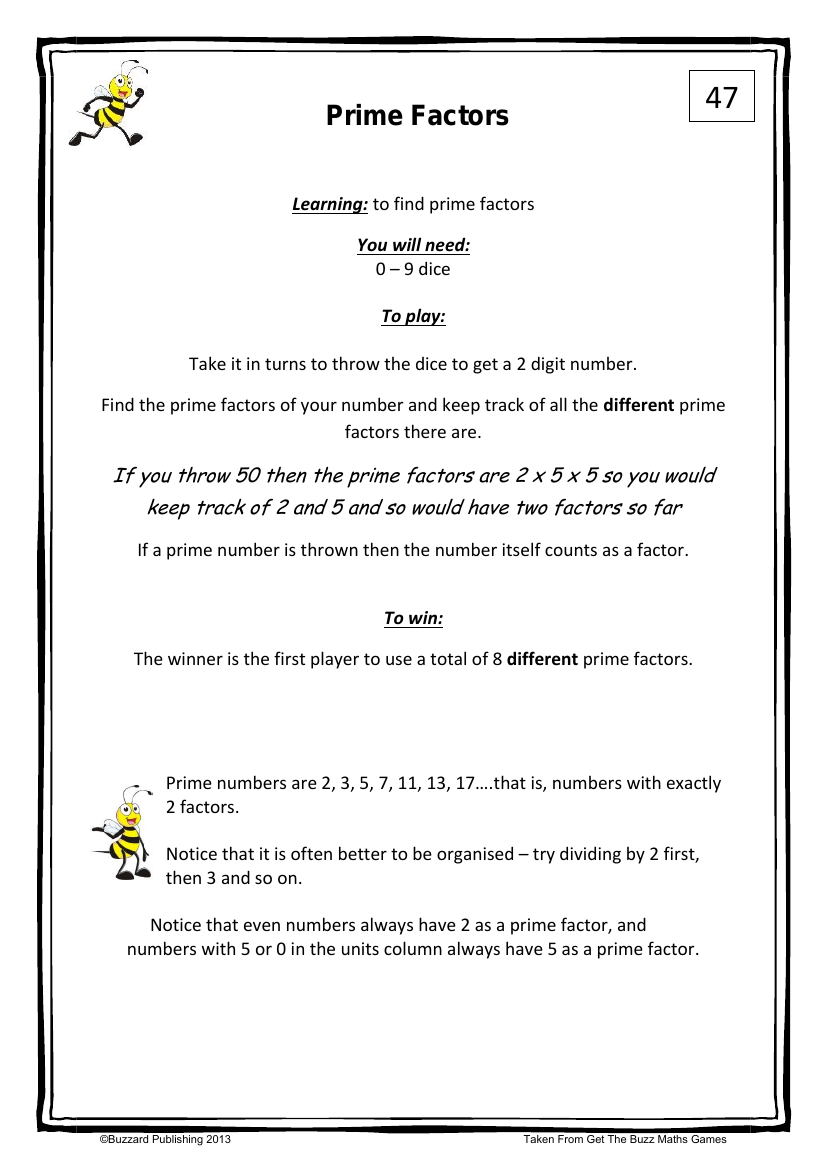Prime Factors

Maths Resource Description
In an engaging and educational game designed to help learners understand prime factors, players use a 0-9 dice to generate two-digit numbers and then identify their prime factors. The objective of the game is to become familiar with prime numbers and the process of factorisation. Each turn involves rolling the dice to create a number, and then players must determine the prime factors of that number. For instance, if a player rolls a 50, the prime factors are 2 and 5, since 50 can be expressed as 2 x 5 x 5. Participants keep a record of the unique prime factors they encounter during the game.
Victory in the game is achieved by the first player who manages to use a total of eight different prime factors in their calculations. As players continue with the game, they will notice patterns that can aid in the factorisation process. For example, even numbers always include 2 as a prime factor, and numbers ending in 5 or 0 will invariably have 5 as a prime factor. The game encourages players to be systematic in their approach, suggesting they start by dividing by 2, then move on to 3, and so on. This methodical strategy helps players to efficiently find prime factors and progress towards winning the game.
